If you have observed clusters of tiny greenish-white insects congregating on the stems and foliage of your tomato plants, it is highly likely that you are contending with aphids. These infamous garden pests can wreak havoc on an otherwise flourishing crop, draining energy from the plant’s foliage and leaving it weak and vulnerable to further damage or disease. If left untreated, aphid infestations can even leave tomatoes misshapen or unmarketable. Thankfully, getting rid of these yield-wrecking pests doesn’t have to be difficult! In this article we will give you all the information you need to effectively eradicate those pesky aphids from your tomato plants so that they will stay healthy throughout the growing season.
What are Aphids: Description
Aphids, commonly known as plant lice, are small insects that feed on the sap of tomato plants. They are often creamy white or gray in color and can be found clustered around the stems and leaves of plants.
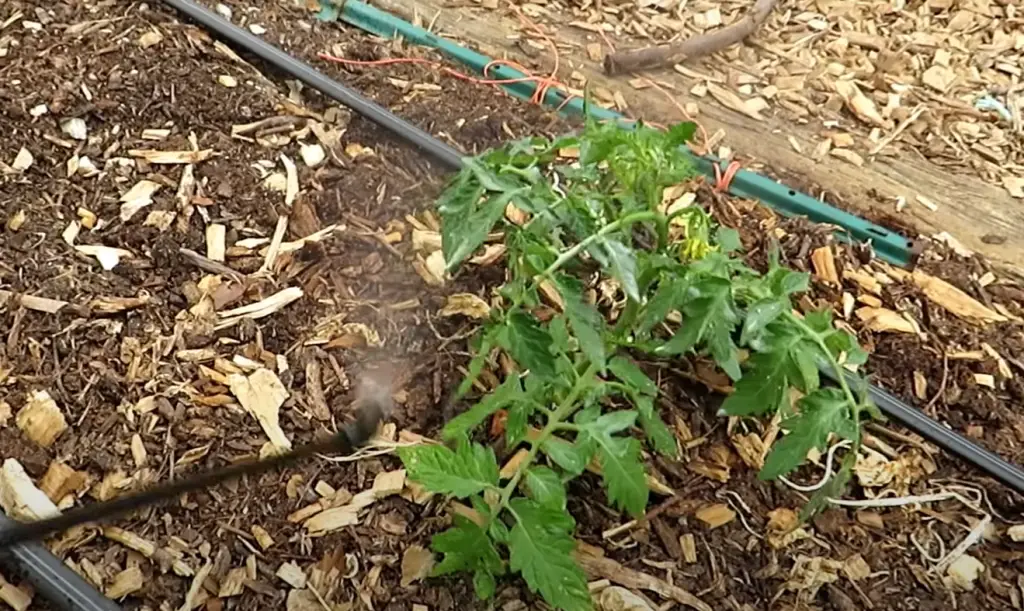
Aphids can cause damage to a tomato plant by sucking large amounts of sap from the plant, leading to wilting and yellowing leaves. They also excrete honeydew, which is a sticky substance that encourages fungal growth. In addition, aphids can spread viruses among plants.
Why Are Aphids So Destructive?
Aphids are destructive pests because they can reproduce quickly, and feed on the sap of tomato plants. This reduces the plant’s ability to get nutrients from the soil, making them weaker and more prone to diseases. The presence of aphids also encourages other insects such as ants and ladybugs to attack your tomatoes.
Controlling these pests early is important in order to protect your tomatoes from further damage or even death. [1]There are multiple effective methods to eliminate aphids from tomato plants, but it is crucial to promptly address the issue before it escalates. Taking swift action is key to preventing severe damage. Some methods may require multiple applications in order to be effective, so it is important to follow through with the treatment plan you choose.
Ways To Control and Get Rid of Aphids On Tomato Plants
Hand Removal
One of the easiest and most effective ways to get rid of aphids on tomato plants is to remove them by hand. Wear gloves when doing so, as some people may have an allergic reaction to touching aphids. Inspect your tomato plant every few days for any signs of an infestation. Carefully pluck the aphids off with your fingers or a pair of tweezers and dispose of them properly.
Oil-Based Natural Sprays
Oil-based natural sprays are an effective way to get rid of aphids on tomato plants. These types of sprays coat the aphid’s body, smothering them and killing them quickly. You can make your own oil-based spray by mixing three teaspoons of ultra-fine horticultural oil with one cup of water in a spray bottle. Shake it well before using it to ensure that the oil is properly mixed into the water. Spray your tomatoes liberally until all parts are covered in oil. Reapply about once a week for optimal results. [2]
Alcohol Sprays
Rubbing alcohol is an excellent choice for killing aphids on tomato plants. It’s especially effective when diluted in water and applied to the plants with a spray bottle.
Spray the solution on all parts of the plant that are affected by aphids, including both sides of the leaves. Reapply every two to three days until you get rid of the pests completely. Make sure to wear protective clothing (long sleeves, gloves, pants) when applying any kind of pesticide or chemical solution to your garden plants.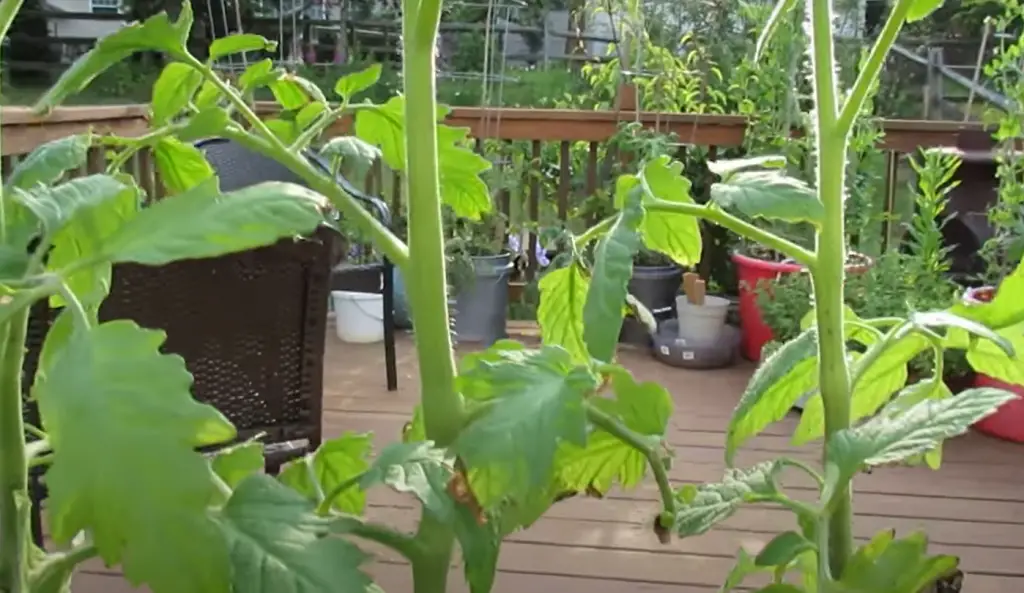
For best results, apply during a sunny day when temperatures are above 60 degrees Fahrenheit (15°C). Additionally, avoid spraying the solution on windy days because it can drift away and contaminate other plants. Once you have applied the alcohol spray, you should notice dead or dying aphids within 24 hours. If not, reapply the solution until they are gone completely.
Natural Predators and Companion Plants
Certain kinds of ladybugs, lacewings, and hoverflies can be effective natural predators of aphids. To attract these beneficial insects to your garden, plant flowers such as marigolds, sunflowers or cosmos in the same area as your tomato plants. These flowers will provide nectar and pollen for the predators, while also helping to keep aphid populations under control. Additionally, you can purchase live ladybugs from a nursery or online store and release them around your tomato plants to help get rid of aphids naturally.
Garlic-Based Sprays
Garlic is another natural remedy that can be used to combat aphids on tomato plants. To make a garlic spray solution at home, mix 2 tablespoons of minced garlic cloves with 2 tablespoons of mineral oil and 1 tablespoon of dish soap in a blender. Once blended, add the mixture to a gallon of water and stir. The solution can then be sprayed directly onto the tomato plants affected by aphids. The garlic scent will repel any further aphids and help keep existing populations under control. Additionally, the dish soap acts as a sticker for the garlic solution, helping it stick longer to the plant leaves so it is more effective at fending off aphids. However, this method should be used sparingly as too much garlic spray on tomato plants can cause them to burn or discolor over time.
Another way to use garlic against aphids is by planting garlic cloves around your tomato patch. Aphids naturally avoid the scent of garlic, so strategically planting cloves around the edges of your tomato patch can help repel any aphids that would otherwise feed on your plants. Additionally, some gardeners have found success using garlic tea as a natural pesticide. Simply soak two minced cloves in hot water for an hour, strain out the pieces of garlic and spray the tea directly onto your tomato plants to help keep aphids away. [3]
Traps and Row Covers
Using traps and row covers is another effective way to keep aphids away from your tomato plants.
Aphids are naturally attracted to bright colors and are drawn to the yellow hue of these traps, where they become stuck on a sticky adhesive surface. This method will help reduce overall populations in your garden without harming beneficial insects like bees or ladybugs.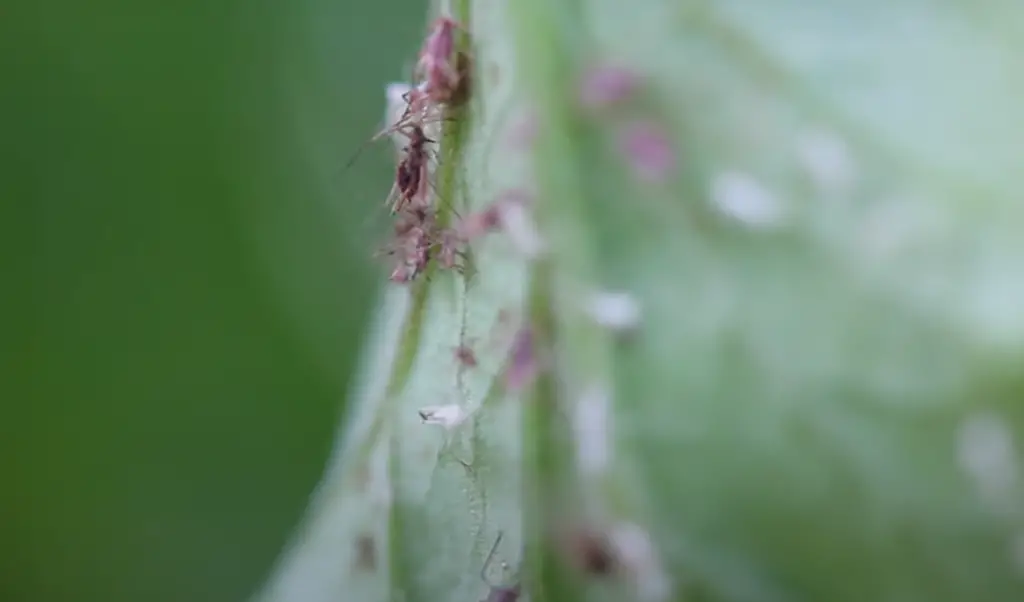
Additionally, using row covers over your tomato plants can protect them from pest infestations as well. Row covers are translucent fabric barriers that allow light and moisture to pass through while keeping out unwanted pests. They should be placed over tomato plants after any flowers have wilted so that pollinators can still reach the plants.
Preventing Aphids on Tomato Plants
Aphids can cause serious damage to tomato plants. As such, it is important to take preventive measures in order to reduce the chances of a future infestation. Here are some tips for preventing aphid infestations:
- Regularly inspect your tomato plants for signs of aphids. Look closely at both the upper and lower sides of leaves and stems. Check for whiteflies, which may indicate an upcoming aphid problem.
- Keep weeds away from tomato plants as they offer a great place for pests to hide and breed.
- Avoid over-watering your tomatoes; this can create a favorable environment for aphids to thrive in.
- Plant companion flowers around the area, such as marigolds, as they help to repel aphids.
- Prune your tomato plants regularly in order to get rid of aphid-infested leaves and stems.
- Introduce beneficial insects into the garden; these include ladybugs, hoverflies, and lacewings which feed on aphids.
Following these steps can help you protect your tomato plants from aphid infestations. By staying vigilant and taking preventive action, you can keep your tomatoes healthy and pest-free! [4]
Symptoms of Aphids on Tomato Plants
Aphids, also known as plant lice, are tiny sap-sucking insects. They can be found in a wide range of colors such as green, yellow, black and even pink. If you notice any of the following symptoms on your tomato plants, it is likely that they have been infested with aphids:
- Discolored leaves: Aphids typically feed on the underside of leaves, so you may notice discolored or yellowed patches appearing on them. The tips of the leaves may curl up and become distorted too.
- Sticky residue: As aphids feed, they excrete a sticky substance called honeydew. This residue will attract ants to the affected area and can also cause fungal growth to occur.
- Stunted Plant Growth: Aphids feed on the plant’s sap, which can stunt its growth and reduce its yield. The plant may become weaker as well due to lack of nutrients from the lost sap.
If you notice any of these symptoms on your tomato plants, it is important that you take action quickly in order to prevent further damage.
Can Tomatoes Recover From Aphids?
Yes, tomato plants can recover from aphid infestations. However, it is important to act quickly and take steps to reduce or eliminate the pest population before serious damage is done. Start by washing away any visible aphids with a strong spray of water. Then, use an insecticidal soap or neem oil solution to target any remaining pests. Finally, apply a pesticide that your local nursery recommends for controlling aphids on tomatoes. Monitor the plant regularly and repeat treatments as needed until all signs of the infestation are gone. With proper treatment, tomato plants can usually recover quickly from aphid damage.

Regularly inspect your tomato plants for signs of new infestations so you can address them immediately before they become too severe. Utilizing companion planting may also help prevent future aphid infestations by introducing natural predators to the garden. If you find yourself in an ongoing battle with aphids, consider using row covers or other physical barriers to keep them off your plants. With the right treatments and prevention methods, you can get rid of aphids on tomato plants and protect your crop from further damage. [5]
FAQ
What is the best spray for aphids on tomato plants?
The most effective spray for aphids on tomato plants is a mixture of water and insecticidal soap. This mixture should be applied to the plant’s leaves and stems, focusing particularly on the visible aphids. Be sure not to use too much, as this can damage your plants.
Can I buy something premade to get rid of aphids?
Yes, there are many over-the-counter products available that contain insecticides specifically designed to target pests such as aphids. These products are easy to apply and often work quickly, so they may be a good option if you have a large number of pests infesting your tomato plants.
What else can I do to prevent Aphid infestations on my tomato plants?
One of the best ways to prevent an aphid infestation is to keep your tomato plants healthy and free from stress. Proper pruning, adequate amount of water, and fertilizing are all important steps in keeping your plants healthy. Additionally, you can use floating row covers on your tomatoes if they are not self-pollinating. This will help protect them from wind and pests while still allowing air and light. You should also regularly check for signs of Aphids or other pests on your plants.
Will vinegar kill aphids on tomatoes?
Vinegar is an age-old remedy for killing aphids on tomato plants. Vinegar can be used as a spray to coat the leaves of your tomato plant and kill off any aphids that are present. The acidity of vinegar is toxic to aphids and will help to reduce their numbers. It is important to note, however, that vinegar should only be applied to the leaves of your tomatoes in the early morning or late evening when the temperature is cooler and there is less chance of burning the foliage due to exposure to intense sunlight after application. Additionally, it is a good idea to test small areas first before applying vinegar liberally over all your tomato plants so you can determine if they are sensitive to its effects. If your tomatoes seem to be doing well after application, then you can proceed with the full treatment. If vinegar is not effective in killing off the aphids, then it may be necessary to turn to chemical insecticides that have been specifically formulated to target and kill these pests. Always read and follow the instructions on any product you use carefully and make sure to wear gloves and a mask when applying them.
How do I get rid of aphids permanently?
The most effective way to get rid of aphids on tomato plants is with a combination of physical removal and organic controls. Physical removal methods include manually removing the aphids from the plant by hand or using a hose to spray them off. You can also use insecticidal soap, neem oil, or horticultural oils to target the pests directly. Be sure to follow all directions and safety precautions when applying these treatments.
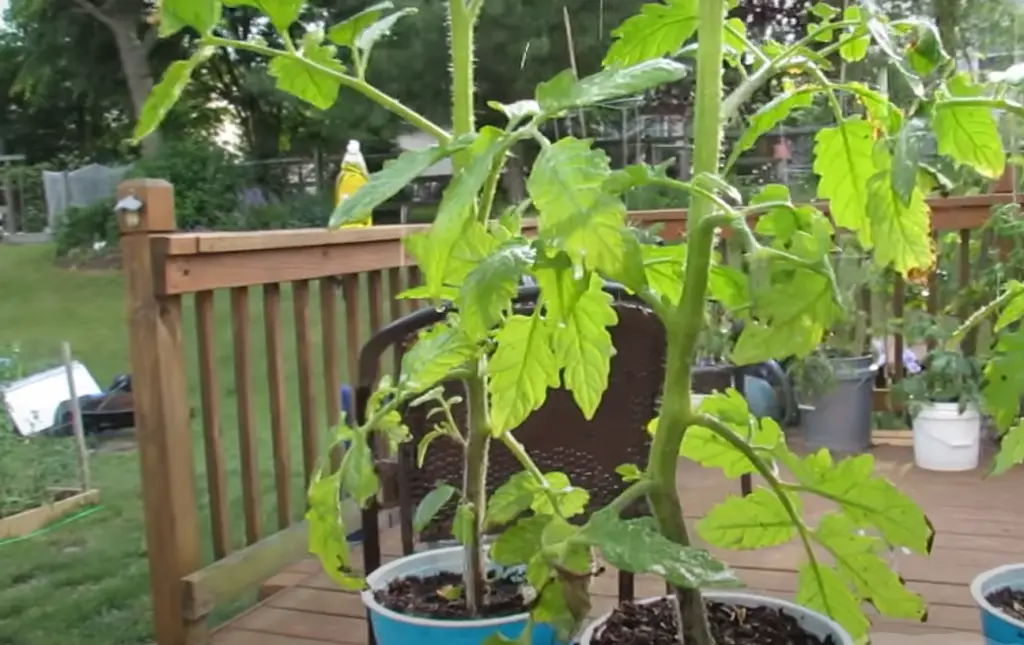
Organic control measures are also an effective option for controlling aphids in your garden. Encouraging natural predators such as ladybugs, lacewings, and hoverflies will help keep aphid populations in check. Planting certain flowers around your garden can attract beneficial insects that feed on pest species like aphids. Finally, make sure to practice proper garden hygiene by removing plant debris and weeds that can provide shelter for aphids.
Can I spray soapy water on my tomato plants?
Yes, you can spray soapy water on your tomato plants to get rid of aphids. Mix 1 tablespoon of mild liquid dish soap with 1 gallon of water and spray the mixture directly onto the affected areas. Be sure to cover both sides of the leaves and stems thoroughly. You may need to apply this solution more than once to completely remove all aphids from your tomato plant. Additionally, it is important to note that repeated applications have been known to cause damage and burning in some varieties of tomatoes, so be sure to test a small area before applying liberally. If there is any damage or burning, discontinue use immediately.
Does lemon juice kill aphids?
No, lemon juice is not an effective method for getting rid of aphids on tomato plants. It may temporarily repel them, but it will not kill them. The acidic properties of lemon juice are not strong enough to do any real damage to the aphids and other insects that feed on tomato plants. Instead, you should use a more targeted approach like insecticidal soap or neem oil to effectively get rid of aphids from your tomato plant. Insecticidal soaps work by disrupting the outer cuticle layer of the bug’s body, while neem oil works as an antifeedant and detergent that interferes with the hormone balance in the insect’s nervous system. Both methods can be used to successfully get rid of aphids on tomato plants. Additionally, introducing beneficial insects like ladybugs and lacewings to your garden can help keep aphid populations in check. You should also avoid using excessive water and fertilizer on your plants which can create a hospitable environment for the pests. Finally, make sure to inspect your tomato plant regularly so that you can take swift action against any infestations before they get out of hand.
Useful Video: How to Easily Treat Aphids on Tomato Plants – Soapy Water & Peppermint Spray: Two Minute TRG Tips
Conclusion
The best way to get rid of aphids on tomato plants is to use a combination of natural remedies and chemical pesticides. Natural methods, such as spraying water or releasing beneficial insects like ladybugs, can be effective in controlling smaller infestations. Chemical insecticides are necessary for larger infestations, but should only be used as a last resort after all other pest control efforts have failed. Additionally, prevention is key by keeping plants healthy through proper watering and fertilizing techniques to avoid future problems with pests. By combining these strategies, you can rid your tomatoes of pesky aphids and enjoy large harvests in the future.
References:
- https://www.tomatobible.com/aphids-on-tomato-plants/
- https://growfully.com/aphids-on-tomato-plants/
- https://www.gardenerbasics.com/blog/aphids-on-tomatoes
- https://thegardeningdad.com/proven-ways-to-get-rid-of-aphids-on-tomatoes/
- https://www.tomatodirt.com/aphids-on-tomato-plants.html





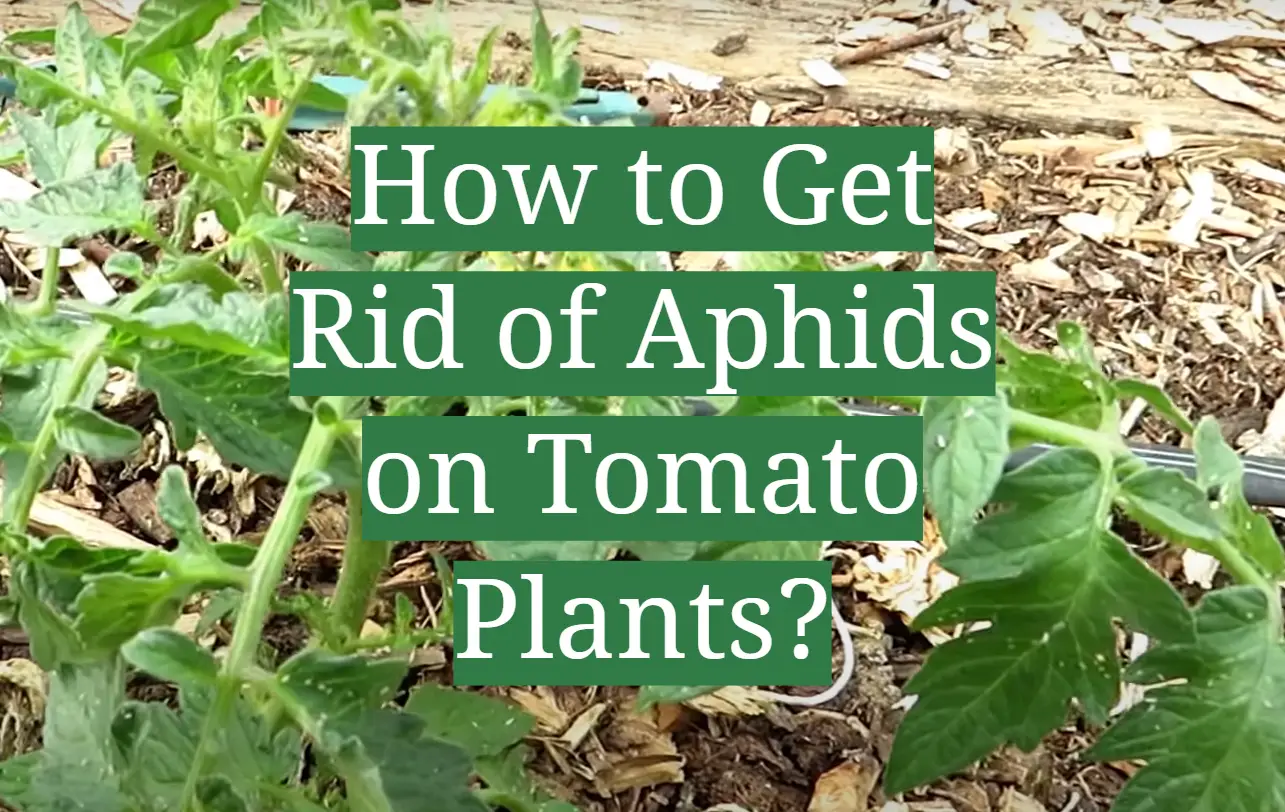




Leave a Reply
View Comments